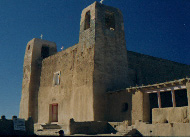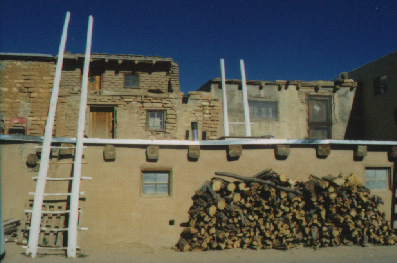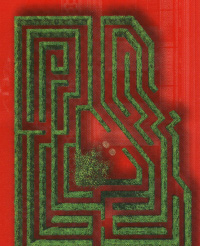
What considerations go into a sense of place?
Consider three authors: Williams, love of the land and an erotics of places. Jackson, the attempt to universalize characteristics drawn from the Southwest. Siry, the importance of nature study and science in changing attitudes and polices.
Compare and contrast their different subjects, specialties and approaches:

Volterra, Tuscany: a view of the hillsides occupied since ancient times, before the common era.
Authors contrasted in a matrix are Williams, Jackson, Siry


Two worlds: Christian and Native, of Acoma pueblo, New Mexico.
| Williams | Jackson | Siry | |
| subjects | Personal Loss | Loss of familiar | Estuaries |
means |
narrative | space described | Legal approaches |
| specialty | naturalist | Landscape historian | Ecological historian |
methods |
Descriptively provocative | analytical | cultural synthesis |
All landscape space is described from an historical perspective, authoritatively and ecologically.
Land is not merely a section of earth or an expanse of territory.
Because Williams says the Earth and its varied landscapes make up a fickle, yet constant lover. Jackson says land is landscape comprised of a geological and a human prehistory that sometimes can still be deciphered from clues left behind by past occupants. Siry explains that with respect to the coasts least appreciated parcels human ideas about estuarine marshes, waters and landscapes have undergone dramatic changes in three centuries.
Etymologically Williams explains normal and Jackson examines landscape and garden. When combining these two authorities we have a clue to why certain features of a land area, or space have profound meaning for us, such as forests, plazas, churches, or cross roads.
What about gardens? Don't they have literal, figurative and proverbial meaning for us?

Literally they are planted areas with domesticated or wild specimens we can eat or admire. Figuratively any garden is a creation where people use water, elements, & features to grow things.
Proverbially gardens are the source of Judeao-Christian & Islamic creation, fall and redemption.
Since we have seen that the word Weal has an etymology that reveals the importance of trees, we can conclude that places may be more than the mere sums of their respective parts.
Hence: any place or places are made up of: water, energy. air, land and a related set of dimensions.
Williams | Jackson | Siry | Thoreau | Carr | Myers